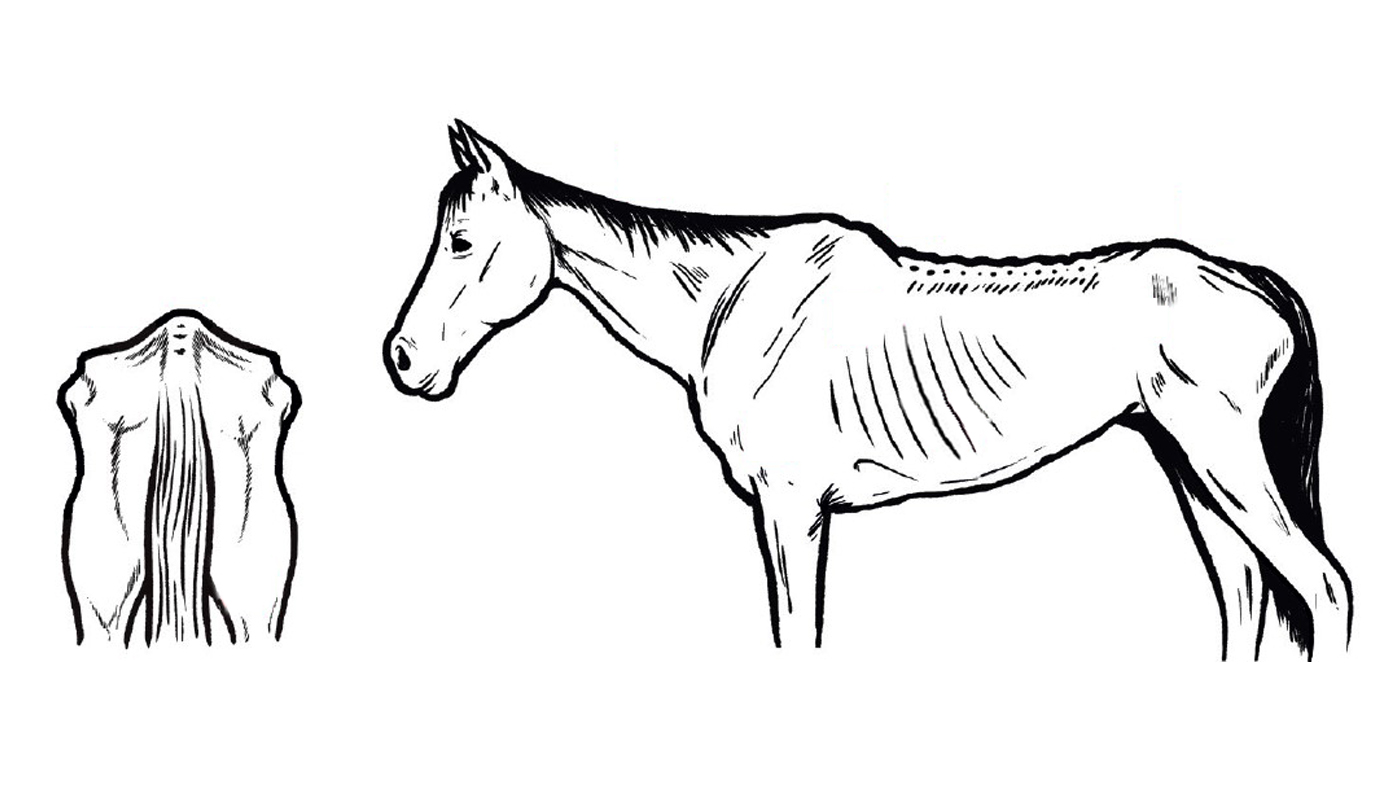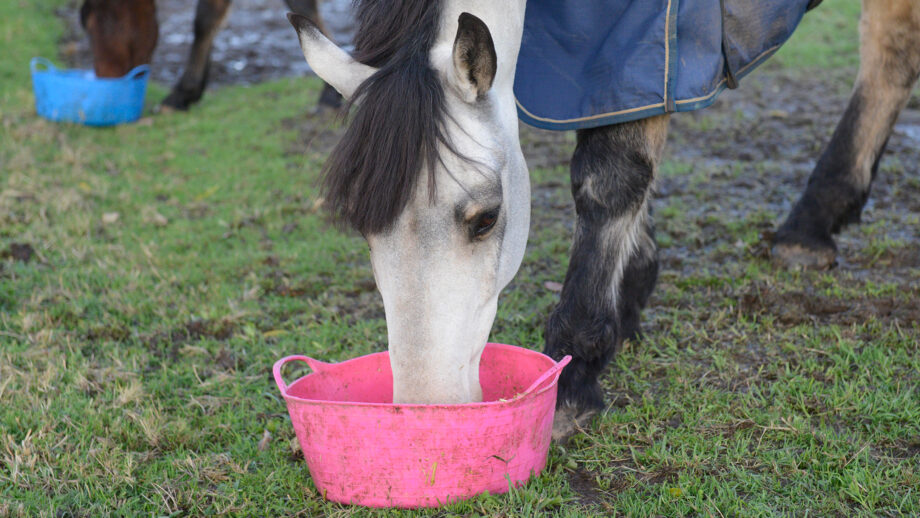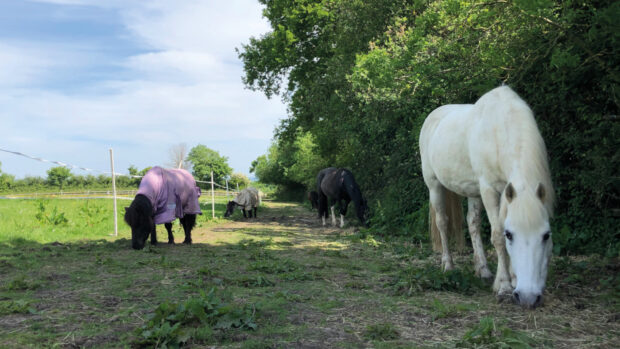Understanding how to body condition score a horse will enable you to judge whether or not your horse needs to lose weight. As horse owners, we know our horse should not be overweight, but it’s not always clear what we are aiming for.
It is impossible to discern by eye how much fat a horse is carrying, and it can be deceptive. Many owners do not have easy access to the accurate measurement a weighbridge would give, it’s easy to body condition score a horse if you know how. While weight is dependent on many other factors such as size, build and muscle, the amount of fat a horse is storing has fewer variables. This makes it a reliable indicator of whether a horse is obese or otherwise.
Once you know how to body condition score a horse, you can tailor the horse’s management plan to gain, maintain or lose weight.
What is a body condition score?
Also called “fat scoring”, this assesses the amount of fat a horse is carrying, not their physical weight, muscle tone or coat condition.
Body condition scoring involves dividing the horse into three areas: the neck and shoulders, the middle or body, and the hindquarters. The scorer both looks at and feels each area and grades them on a scale depending on how much fat they are carrying.
It is a six-point system, grading from emaciated (zero) to obese (five). A healthy horse should score between two and three, allowing for seasonal fluctuations. The ideal score for most leisure horses would be about three. Higher than that, and the horse is at risk of obesity and associated diseases such as laminitis.
While in the UK we use a system of zero to five, a one-to-nine system is used in the US, ranging from “poor” to “extremely fat”.
How to body condition score a horse
Make sure the horse is relaxed and standing as squarely as possible on a firm, level surface. You need to feel the fat cover in certain areas; you cannot just use your eye. Don’t wear gloves, as you need to be able to feel whether it is muscle or fat.
As horses store fat in different places, give them three score out of five for the neck and shoulder, one for the middle, and one for the hindquarters, and take an average. Try to be objective and consistent, using the guide below.
The scoring system is as follows:
0 Emaciated: showing a marked ewe neck, which is narrow at the base. The skin is tight over visible ribs and you can easily see the sharp spine and. The pelvis is angular, the skin tight and the rump is sunken. There will be a deep cavity under the tail and either side of the croup. Large gap between thighs.

1 Poor or underweight: ewe neck, narrow at the base. The ribs are visible. Skin shrunken either side of the spine, which is well defined. Rump sunken but skin supple, pelvis and croup well defined and cavity under the tail.

2 Moderate: ideal for fit racehorse or eventer. Neck narrow but firm, shoulder blade clearly defined. Ribs just visible. Spine well covered and the spinous processes felt but not seen. Rump flat not shrunken. Croup well defined with some fat. Slight cavity under tail.

3 Good: ideal for most show and leisure horses. Firm neck and no crest (bar stallions), defined shoulder blades. Ribs and spinous processes covered but easily felt. Pelvis rounded but easily felt.

4 Fat or overweight: slight crest, wide and spongy. Ribs well covered. Gutter along spine to root of tail with fat stored either side and an “apple-shaped” or “M-shaped” bottom when observed from behind. Pelvis covered and barely felt.

5 Obese: marked crest, very wide and firm with creases of fat. Shoulder blade and pelvis buried and difficult to feel. Cannot feel ribs. Deep gutter along spine to root of tail, back broad and flat. Marked apple (or M-shaped) bottom with distended skin. Inner thighs rubbing together.

Ideally you should check your horse’s body condition score on a fortnightly basis so that you can act on any weight gain or loss appropriately. This can be done in tandem with a weigh tape to monitor changes. While it is good for consistency to have the same person check the horse, it is advisable also to have another pair of eyes (and hands), as we can be biased towards our own horses.
Correct scoring
Just as in humans, it’s tempting to pass off fat as muscle. If you are struggling to discern whether you are feeling fat or muscle on your horse, compare it to your upper arm – the bicep (muscle) feels different to the wobblier bit underneath the arm. Fat feels spongy or wobbly; muscle is firmer. However, dangerous crest fat can feel hard and firm.
Bear in mind, too, that natives store fat in different places to other horses. They tend to store it in pads behind their shoulders, so you should include this in your score – it may even out if they score lower in other areas.
When measuring the “middle” of the horse, pay attention to the ribs and the back. Horses don’t tend to store fat under their bellies, so this is not an accurate area to assess their weight.
Even if your horse is fit, if his body score is four or over, he is still fat. However, if he creeps up to four while on holiday or in the summer, this is less dangerous than horses that fluctuate according to the season. But any horse scoring four or above should lose weight. The Blue Cross advises that horses that are prone to laminitis should never be allowed to go over a score of two and a half, to ensure they are not carrying any excess fat.
Conversely, eventers and racehorses can look a little underweight when they are physically fit with well-developed muscles.
What is a Cresty Neck Score?
An additional tool is the Cresty Neck Score (CNS), which assesses the fat along the top of the horse’s neck, and uses the same grading as the UK body condition score, from zero to five. The crest fat is heavily influenced by breed (less common in thoroughbreds and more common in cobs — and stallions). A healthy CNS is zero to two, while a CNS of three or higher has been linked to an increased risk of laminitis and Equine Metabolic Syndrome.
You may also be interested in…

15 feeds to help your horse gain weight and condition

The equine obesity epidemic: what can you do to help?
“No matter what your role is, what are you going to change, to help in this obesity epidemic?”

Managing equine metabolic syndrome
Veterinary advice on managing the hormonal condition which leads to equine obesity and laminitis

Tipping the balance: why the levels of equine obesity are escalating *H&H Plus*

5 reasons why a subscription to HorseandHound.co.uk makes the perfect last-minute gift
Horse & Hound magazine, out every Thursday, is packed with all the latest news and reports, as well as interviews, specials, nostalgia, vet and training advice. Find how you can enjoy the magazine delivered to your door every week, plus options to upgrade to access our H&H digital subscription service which brings you breaking news as it happens as well as other benefits.




